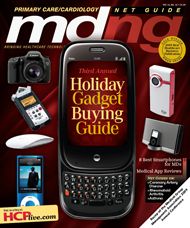Is there really such a thing as "the healthcare marketplace"?
Health 2.0 thinker and MDNG favorite Scott Shreeve, MD, wrote a blog post a while back about the frustrations of trying to find out how much his son’s tympanostomy was going to cost. After getting the runaround for a while from the front desk, he was finally able to get them to divulge the facility fee, but not the physician fees. After asking “why they don’t bundle everything into one price” so healthcare consumers would be able to “compare across various combinations of facilities and providers,” he was told he would have to take it up with the physician’s office. Another phone call (this one to the physician’s office) procured the CPT code and procedure charge (actually, the insurancedictated reimbursement amount). Finally, after a third call (to the anesthesiologist) and some more jousting, he was able to find out the cost of that portion of the total bill.
It took all of that time and effort, by someone who “knows the ins and outs, all the secret handshakes and covert codes, and most aspects of healthcare financing,” just to figure out how much a medical procedure actually cost. As healthcare consumers are taking a more active role in managing their health and looking to drive their interactions with the healthcare system by comparing hospitals and providers, the issue of price transparency (or rather, the lack of price transparency) is fast becoming a hot topic. In his blog post, by way of analogy, Shreeve notes that diners do not get “separate receipts for tomatoes, buns, and burger--[they] get a single price for the thing [they] want: the complete hamburger.”
Now, it’s certainly true that it is often difficult to say for certain how much a procedure or visit will cost ahead of time, due to the number of unknown variables (What other complications will be uncovered during the exam? What other tests will be required?). It is also true that the actual cost of healthcare is obscured by insurance deductibles, co-pays, and other factors. And yet, how are consumers to make a truly informed choice about the healthcare services they wish to engage when so much important information is unavailable to them? As Shreeve noted, although he was able to finally learn the cost of his son’s procedure, in the end he had no information about “outcomes achieved, safety rates, customer satisfaction, or other metrics” that would potentially influence one’s decision about whether to engage the services of a particular provider.
More than ever, patients are seeking answers to these questions and are creating and using Health 2.0 tools that will enable them to compile and compare information on pricing and outcome. In closing, let me add a question of my own: How do MDNG readers handle requests for information about the cost of treatments and procedures? What do you say to patients when they ask, “How much is this going to cost me, doc?”
Thank you for reading.
Mike Hennessy
